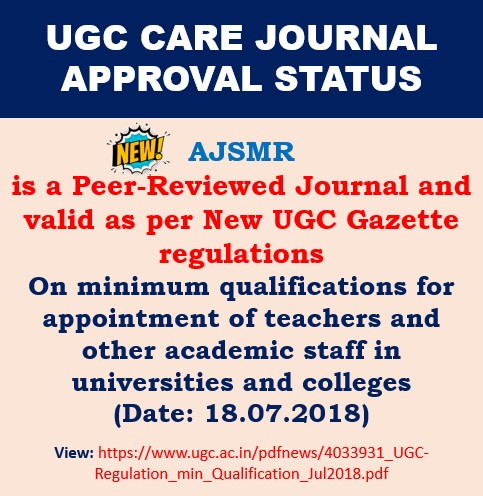Original Research Article I Volume 1 I Issue 4 I 2015
Incidence of cataract in type 2 diabetes mellitus among Rural people
Chintala Priyanka and Estari Mamidala
American Journal of Science and Medical Research; 1(4); 108-111
DOI:http://dx.doi.org/10.17812/ajsmr2015141
Abstract:
Cataract is a leading cause of blindness worldwide and a major public health problem. Ageing populations and the increasing prevalence of diabetes mellitus create an ever increasing prevalence of cataracts and health care demands. To meet this challenge, it is necessary to know more about the association between diabetes and the different subtypes of lens opacities. Thus, we aimed to study the epidemiology and risk factors of cataract subgroups in type 2 diabetes mellitus in a defined geographical area compared with an age- and gender matched control population from the same geographical area. Subjects in the rural people with a diagnosis of type 2 diabetes mellitus and a control group participated in the study. Lens opacities were graded with Lens Opacities Classification System II in all participants. Lens Opacities Classification System score ‡2 was considered as significant lens opacity. Anthropometric and blood chemistry data were collected for all participants in connection with the eye examination. For the diabetic population, yearly updated information on glucose control, blood pressure and body mass index was available through medical records from diabetes diagnosis until the time of the eye examination. The prevalence of significant cortical, posterior subcapsular and nuclear cataract was 65.6%, 42.2% and 48.30%, respectively, in the type 2 diabetes population in rural population.
Keywords:
Cataract, Type 2 Diabetes mellitus, Adilabad, Lens, capsular.
References:
1. Arnarsson A, Jonasson F, Sasaki H, Ono M, Jonsson V, Kojima M, Katoh N & Sasaki K (2002): Risk factors for nuclear lens opacification: the Reykjavik Eye Study. Dev Ophthalmol 35: 12–20
doi:10.17812/ajsmr2015111
2. Eydis Olafsdottir, Dan K. G. Andersson and Einar Stefa. The prevalence of cataract in a population with and without type 2 diabetes mellitus. Acta Ophthalmol. 2012: 90: 334–340.
3. Hennis A, Wu SY, Nemesure B & Leske MC (2004): Risk factors for incident cortical and posterior subcapsular lens opacities in the Barbados Eye Studies. Arch Ophthalmol 122: 525–530.
4. Klein R, Klein BE, Magli YL, et al. An alternative method of grading diabetic retinopathy. Ophthalmology 1986; 93:1183–7.
5. Patandina S, Botsa ML, Abel R, et al. Impaired glucose tolerance and diabetes mellitus in a rural population in South India. Diabetes Res Clin Pract 1994;24:47–53.
6. Porika Raju and Estari Mamidala (2015). Anti-diabetic activity of compound isolated from Physalis angulata fruit extracts in alloxan induced diabetic rats. The American Journal of Science and Medical Research, 2015,1(2):40-43.
7. Porika Raju and Estari Mamidala . Anti diabetic activity of compound isolated from Physalis angulata fruit extracts in alloxan induced diabetic rats. The Ame J Sci & Med Res, 2015, Volume 1; Issue 1; p40-43. DOI: 10.17812/ajsmr2015111.
8. Prasad S, Kamath GG, Jones K, Clearkin LG, Phillips RP. Prevalence of blindness and visual impairment in a population of people with diabetes. Eye. 2001;15:640–643
9. Sankara Nethralaya Diabetic Retinopathy Epidemiology and Molecular Genetic Study (SN–DREAMS III): study design and research methodology. BMC Ophthalmol 2011;11:7
10. Sateesh Pujari and Estari Mamidala (2015). Anti-diabetic activity of Physagulin-F isolated from Physalis angulata fruits. The American Journal of Science and Medical Research, 2015,1(2):53-60. doi:10.17812/ajsmr2015113...
Article Dates:
Received: 2 September 2015; Accepted: 18 October 2015; Published: 20 October 2015
How To Cite:
Chintala Priyanka and Estari Mamidala (2015). Incidence of cataract in type 2 diabetes mellitus among Rural people. The American Journal of Science and Medical Research, 1(4):108-111. doi:10.17812/ajsmr2015141 Received 2 September 2015; Accepted 18 October, 2015 Published online 20 October, 2015



